Textual evidence that Rudra-Siva is integral to Vedic pantheon. So is linga a hieroglyph denoting metalwork in a smithy, temple.
Mirror: https://www.academia.edu/10841276/Textual_evidence_that_Rudra-Siva_is_integral_to_Vedic_pantheon._So_is_linga_a_hieroglyph_denoting_metalwork_in_a_smithy_temple
Mleccha vs. Arya is a false dichotomy posited by some scholars. Mleccha and Arya were Bharatam Janam.
Linga connoted मेंढा [ mēṇḍhā ] 'stake' rebus: meḍ 'iron, metal' (Ho. Munda). Face ligatured to a stake (linga) connoted mũh 'face' (Hindi) rebus: mũhe 'ingot' (Santali). Thus the artists represented Ekamukhalinga as ingot of iron. In a Ekamukhalinga of Mathura of 1st cent. CE, the ligatured stake (linga) is shown together with a tree which connotes: kuṭi 'tree' rebus: kuṭhi'smelter'. Since kole.l'smithy' connoted kole.l'temple' (Kota),the sacredness or veneration associated with the sculptures in the temple were shown with symbols of stake + face + brick kiln which connoted the life-activity of metalworkers who created wealth-yielding iron or metal ingots using a smelter.
Manusmriti (II. 17-23) is wrongly interpreted as setting apart mleccha-s from Aryaavarta -- in terms of geography, culture and purity..(cf. Deshpande, MM and PF Hook (eds), Aryan and Non-Aryan in India, Michigan papers on south ad southeast Asia, No. 14 (Ann Arbor, 1979); Jim G Shaffer, 'The Indo-Aryan invasions: cultural myth and archaeological reality', Paper presented at the Ninth Annual Wisconsin Conference on South Asia, Nov. 1980). Manusmriti simply distinguished between two dialectical versions of language of the times.
Chandas was the grammatical poetic diction for the mantras bequeathed to us as ancient texts such as the Rigveda. There is no documentation available for the grammar of Chandas. Pingala's Chandas sastra was only a Samskritam treatise on prosody. Panini documented the grammar for Samskritam, the literary version to render morphology and syntax avoiding semantic ambiguities and with grammatical precision. Mleccha was the parole, lingua franca of the seafaring artisans and merchants engaged in maritime trade exchanges. All Bharatam Janam were metalcaster folk.
It is incorrect to assume that Rudra plays no role in Soma yajna. An entire sukta in Rigveda is addressed jointly to Soma-Rudra. Vajasneyi rescension of Sukla Yajurveda addresses Rudra: 'Thou art gracious (Siva) by name.' Taittiriya Samhita of Krishna Yajurveda mentions Siva several times while referring to Rudra. Siva as an epithet is also used for Indra, Mitra, Agni. In Rigveda, Rudra is 'asau devam' -- that divinity.
Tracing the semantics of linga as presented on sculptures and reliefs by ancient sculptors
![]()
मेंढा [ mēṇḍhā ] A crook or curved end rebus: meḍ 'iron, metal' (Ho. Munda)
See: http://bharatkalyan97.blogspot.in/2015/02/a-critique-of-general-theory-of-images.html for the sculpture of three stakes on Sit Shamshi bronze.![]()
Anthropomorphic form ligatured to linga. Mathura. 2nd cent. CE (Fig. 2.2)
mũh 'face' (Hindi) rebus: mũhe 'ingot' (Santali) múkha n. ʻ mouth, face ʼ RV., ʻ entrance ʼ MBh.Pa. mukha -- m.; Aś.shah. man. gir. mukhato, kāl. dh. jau. °te ʻ by word of mouth ʼ; Pk. muha -- n. ʻ mouth, face ʼ, Gy. gr. hung. muy m., boh. muy, span. muí, wel. mūī f., arm. muc̦, pal. mu', mi', pers. mu; Tir. mū ʻ face ʼ; Woṭ. mū m. ʻ face, sight ʼ; Kho. mux ʻ face ʼ; Tor. mū ʻ mouth ʼ, Mai. mũ; K. in cmpds. mu -- ganḍ m. ʻ cheek, upper jaw ʼ, mū -- kāla ʻ having one's face blackened ʼ, rām. mūī˜, pog. mūī, ḍoḍ. mū̃h ʻ mouth ʼ; S. mũhũ m. ʻ face, mouth, opening ʼ; L. mũh m. ʻ face ʼ, awāṇ. mū̃ with descending tone, mult. mũhã m. ʻ head of a canal ʼ; P. mū̃h m. ʻ face, mouth ʼ, mū̃hã̄ m. ʻ head of a canal ʼ; WPah.śeu. mù; ʻ mouth, ʼ cur. mū̃h; A. muh ʻ face ʼ, in cmpds. -- muwā ʻ facing ʼ; B. mu ʻ face ʼ; Or. muhã ʻ face, mouth, head, person ʼ; Bi. mũh ʻ opening or hole (in a stove for stoking, in a handmill for filling, in a grainstore for withdrawing) ʼ; Mth. Bhoj. mũh ʻ mouth, face ʼ, Aw.lakh. muh, H. muh, mũh m.; OG. muha, G. mɔ̃h n. ʻ mouth ʼ, Si. muya, muva. -- Ext. -- l<-> or -- ll -- : Pk. muhala -- ,muhulla -- n. ʻ mouth, face ʼ; S. muhuro m. ʻ face ʼ (or < mukhará -- ); Ku. do -- maulo ʻ confluence of two streams ʼ; Si. muhul, muhuna, mūṇa ʻ face ʼ H. Smith JA 1950, 179.; -- -- ḍ -- : S. muhaṛo m. ʻ front, van ʼ; Bi. (Shahabad) mohṛā ʻ feeding channel of handmill ʼ. -- Forms poss. with expressive -- kkh -- : see múkhya -- . -- X gōcchā -- s.v. *mucchā -- (CDIAL 10158).
![]()
Linga worship relief. Bhutesvara, Mathura. 1st cent. BCE (Fig. 5.1)
Terracotta Panchamukha linga.Bhita, ca. 2nd cent. BCE - 2nd Cent. CE (After Fig. 6.2 Fig. 2.2, Fig. 5.1, Fig.3.1 and 3.2 in: Gayatri, Manola K., Interpreting symbolism of the Linga: Contrasting Freudian analysis with ideas of the Indian Linga Cult.
Rudra is father of the Maruts and hence the divinity of storms (RV 2.33.1):
आ ते पितर मरुताम् सुम्नं एतु मा नह सूर्यस्य संदृशो युयोथाः अभी नो वीरो अर्वति क्षमते प्र यजायेमहि रूद्र प्रजाभिः 2.033.01 Father of the Maruts [idam pitre maruta_m: RV 1.114.6], may the felicity extend to us; exclude us not from the sight of the sun; (grant that) our valiant (descendants) may overcome (these) foes, and that we may be multiplied, Rudra, by (our) progeny.
RV 6.49.10 calls Rudra 'bhuvanasya pitarah' (Father of the Universe)
भुवनस्यपितरंगीर्भिराभीरुद्रंदिवावर्धयारुद्रमक्तौ |बृहन्तम् ऋष्वं अजरम् सुषुम् ऋधग़ घुवेम कविनोषितासः|| RV 6.49.10
6.049.10 Exalt Rudra, the father of the universe, with these hmns by day; (exalt) Rudra (with them) by night; animated by the far-seeing, we invoke him, mighty, of pleasing aspect, undecaying, endowed with felicity, (the source of) prosperity.
RV 2.33.9 calls Rudra as “īśānādasya bhuvanasya” (Lord or Sovereign of the Universe) :
स्थिरेभिर् अङ्गैः पुरुरूप उग्रो बभ्रुः शुक्रेभिः पि-पिपिशे हिरण्यैः
ईशानादस्यभुवनस्यभूरेर्नवाउयोषदरुद्रादसुर्यम ||
2.033.09 (Firm) with strong limbs, assuming many forms fierce, and tawny-coloured, he shines with brilliant golden ornaments; vigour is inseparable from Rudra, the supreme ruler and lord of this world. [Vigour: asuryam = bala, strength; or, it may connect Rudra with the asuras].
Rudra wields the vajra weapon (RV 2.33.3)
श्रेष्ठो जातस्य रूद्र श्रियासि तवस्तमस तवसाम् वज्रबाहो
पर्षि णः पारम् ऋलतहसः स्वस्ति विश्वा अभीती रपसो युयोधि
2.033.03 You, Rudra, are the chief of beings in glory; you, wielder of the thunderbolt, are the might of themighty; do you waft us in safety over (the ocean) of sin; repel all the assaults of iniquity.
Rudra is fierce:
सतुहि श्रुतम् गर्तसदंयुवानंमर्गंनभीममुपहत्नुमुग्रम |
मृळा जारित्रे रूद्र स्तवानो अन्यम् ते अस्मन्नि वपन्तु सेनाः 2.33.11
2.033.11 Glorify the renowned Rudra, riding in his car, ever youthful, destructive, fierce like a formidable wild beast; Rudra, propitiated by praise, grant happiness to him who praises (you), and let your hosts destroy him who is our adversary.
Rudra is invoked to be gracious and to bring bliss to the worshipper (RV 1.114.2):
मर्ळानोरुद्रोतनोमयस कृधि क्षयद्वीराय नामसँ विधेम ते
यच् छम् च योश च मनुर आयेजे पिता तद अश्याम तव रूद्र प्रणीतिषु
Translation: Be gracious to us, Rudra; grant us happiness, for we worship the destroyer of heroes with oblations; and, by your directions, Rudra, may we obtain that freedom from disease and exemption from dangers which our progenitor, Manu, bestowed upon us, (having obtained them from the divinities).
Who is so brilliant as S'amyu, who gratifies like gold, the best of divinities, the provider of habitations. (RV 1.43.5)
Refrring to Rudra as the mighty divinity with braided hair, RV 1.114:
इमारुद्रायतवसेकपर्दिनेकषयद्वीरायपरभरामहेमतीः |
यशा शं असद द्विपदे चतुष्पदे विश्वम् पुष्टं ग्रामे अस्मिन्न् अनातूरम् ||
Translation of RV 1.114.1: We offer these praises to the mighty Rudra, with the braided hair, the destroyer of heroes, in order that health may be enjoyed by bipeds and quadrupeds, and that all being sin this villag may be (well) nourished and exempt from disease. [Rudra; he cause sall to weep (rodayati) at the end of the world; or rut, signifying pain, pain of living, which Rudra drives away (dravayati); or, rut, may mean 'word or text or the upanis.ads of the vedas' by which he is approached or propitiated (druyate); or, rut, may mean 'holyor divine speech or wisdom' which he confers (ra_ti) upon his worshippers; or, rut, may mean 'darkness' that which invests of obstructs (runaddhi) all things and which Rudra dissipates (vr.na_ti); or, while the gods were engaged in battle with the asuras, Rudra, identified with Agni, came and stole their treasure; after conquering the enemy, the gods searched for the stolen wealth, and recovered it from the thief, who wept (arudat), and Agni was thence called Rudra (Taittiri_ya Sam.hita_ 1.5.1.1). With braided hair: kapardine, fr. kaparda, jat.a_ of S'iva; hence, = jat.ilaya. S'iva is recognized as Rudra; Destroyer of heroes: ks'yad vi_ra_ya, in whom heroes (vi_ra) perish (vinas'yanti); or,of whom the imperial (ks.ayantah pra_ptais'varyah) heroed (that is, the Maruts) are the sons].
Doris Srinivasan presents key attributes of Rudra from ancient texts (Srinivasan, Doris M., 1983,Vedic Rudra-Siva, JAOS 103.3, p.544. The full text of Doris Srinivasan's article is embedded for ready reference.):https://www.scribd.com/doc/255920234/Vedic-Rudra-Siva-by-Doris-M-Srinivasan-1983
Rudra is not anthropomorphic. In AV 11.2.2.7, he is thousand-eyed (just as a thousand eyes are ascribed to Varuna in Rigveda: RV 7.34.10 (this is just a metaphor for all-comprehensive sight). His belly is blue, back is red (AV 15.1.7.8). His neck is blue (VS 16.7). The colour of his tuft is blue (AV 2.27.6).
He is of copper colour, red and brown (VS 16.6; TS 4.5.1i). His hair is braided, knotted like a cowrie shell (RV 1.114.1.5; TS 4.5.5d; 5.9c).
He protects assailers, robbers, burglars and pilferers (TS 4.5.3a,c,d,f).
Sataridriya of Yajurveda (TS 4.5; VS 16) present Rudra in larger than life form, visvarupa. TS 5.4.2 and 4 praise Rudra as lord of cattle, food, fields, forests, chariots. He is fused with Agni in Atharva veda.
He is worshipped by Vraatya (AV 15.1.5)
Rigveda Sukta 7.46: Translation: Note. The reference to blazing weapon is consistent with Atharvaveda Skambha Sukta venerating Rudra as a blazing pillar of light, pillar of fire. This is consistent with Satapatha Brahmana of Yajurveda (VI.1.3.10) which says emphatically:अग्निर्वै रुद्रः 'Agni is Rudra'. Atharvaveda skambha sukta elaborates on the blazing pillar of light as a manifestation of Rudra. Satapatha Brahmana (VI.1.3.17) notes that the highest form of Rudra is the same as Aditya, the Sun, hence the pillar of light appellation
Svetasvatara Upaishad makes Rudra the supreme divinity:
yo devānāṃ prabhavaś codbhavaś ca viśvādhiko rudro maharṣiḥ /
hiraṇyagarbhaṃ paśyata jāyamānaṃ sa no buddhyā śubhayā saṃyunaktu // (Sv. Up.4.12)
Translation: He, the creator of the divinities and the bestower of their powers, the Support of the universe, Rudra the omniscient, who at the beginning gave birth to Hiranyagarbha−may He endow us with clear intellect.
इमा रुद्राय स्थिरधन्वने गिरः क्षिप्रेषवे देवाय स्वधात्ने
अषाळ्हाय सहमानाय वेधसे तिग्मायुधाय भरता श्रुणोतु नः|
स हि क्षयेण क्षम्यस्य जन्मनः साम्राज्येन दिव्यस्य चेतति
अवन्न अवन्तॆर् उप नो दुरश् चरानमीवो रुद्र जासु नो भव |
या ते दिद्युद् अवसृष्टा दिवस् परि क्ष्मया चरति परि सा वृणु नः
सहस्रं ते स्वपिवात भेषजा मा नस तोकेषु तनयेषु रीरिषः| (RV 7.46)
7.046.01 Offer these praises to the divine Rudra, armed with the strong bow and fast-flying arrows, the bestower of food, the invincible, the conqueror, the creator, the wielder of sharp weapons; may he hear our (praises).
7.046.02 He is known by his rule over those of terrestrial birth, by his sovereignty over those of celestial (origin); protecting our progeny, Rudra, propitiating you (by praise), come to our dwellings, and be to them a guardian against disease.
7.046.03 May your blazing (weapon), which, discharged from heaven, traverses the earth, avoid us; thine, appeaser of the wind, are a thousand medicaments; inflict not evil upon our sons and grandsons.
7.046.04 Harm us not, Rudra; abandon us not; let us not fall under the bondage of you when displeased; make us partakers of the life-promotion sacrifice; and do you, (gods), ever cherish us with blessings.
"...the most prevalent and important early saivite icon is the linga. The provenance of these linga icons indicate that worship of the membrum virile is entirely indigenous and that it is most pervasive in those geographic regions that are the most closely associated with Aryan culture. Brahmanical literature also sustains a cogent, non-erotic meaning for linga, which is applied in passages related to Rudra-Siva and his capacity to make himself immanent in phenomenality. In consequence, the linga icon may disavow Siva's non-Vedic affinities, and indicate instead his Vedic background." (ibid., p.555) Thus Doris Srinivasan leads upto Hinduistic Siva and NOT an 'outsider' as presumed by referring to Rudra-Siva's non=Aryan roots. This, in simple terms, means that mleccha were as much Aryan as the Aryans themselves. Since Manusmriti distinguishes mleccha and arya only in linguistic terms, the mleccha speech was the parole, while the Aryan diction or chandas was considered literary, fit for texts and performance of Yajna-s chanting the mantras without any mis-pronunciations. A consequence of this 'insider' view of Rudra-Siva is that mleccha an arya together were dasyu, the daha, people called Bharatam Janam.
That Rudra was an integral part of the Vedic pantheon is emphatic in RV 7.40.5 which lists Rudra together with Varuna, Mitra, Aryaman, Aditi, Vishnu, Asvins:
अस्यदेवस्यमीळ्हुषोवयाविष्णोरेषस्यपरभ्र्थेहविर्भिः |
विदेहिरुद्रोरुद्रियंमहित्वंयासिष्टंवर्तिरश्विनाविरावत || RV 7.40.5
7.040.05 I propitiate with oblations the ramifications of that divine attainable Vis.n.u, the showerer of benefits; Rudra, bestow upon us the magnificence of his nature; the As'vins have come to our dwelling abound with (sacrificial) food. [Ramifications: vaya_h, branches; all other deities, as it were, branches of Vis.n.u: anye deva_h s'a_kha_ iva bhavanti; citing a text: vis.n.u is all divinities, vis.n.uh sara_ devata_ iti s'ruteh: vis.nuh sarva_ devata_h (Aitareya Bra_hman.a 1.1)].
The divinity associated with RV 7.060.12, the Mahamrutyunjaya mantra is Rudra as the liberator from death, while the other ricas invoke the marudgaNa (the Rishi is Vasishtha Maitravaruni):
त्र्यम्बकं यजामहे सुगंधिम पुष्टिवर्धनं
उर्वारुकम् ईव बन्धनान् मृत्योर मुक्षीय मामृतात् || (RV 7.060.12)
7.059.12 We worship Tryambaka, whose fame is fragrant, the augmenter of increase; may I be liberated from death, and, like the urva_ruka from its stalk, but not to immortality; let us worship Trayambaka, whose fame is fragrant, the augmenter of increase; may I be liberated from death like the urva_ruka from its stalk, but not unto immortality. [Tryambaka: the father, ambuka of the three deities, Brahma, Vis.n.u and Rudra; also identified with mahatva (R.gvidha_na); whose fame is fragrant: sugandhim = prasa_ritapun.ya ki_rtim, whose fame of virtue is spread; in like manner as the fragrance of a tree full in flower sheds sweetness, so spreads the fragrance of holy actions; the augmenter of increase: pus.t.i vardhanam, the augmenter of nutrition, jagad-vi_jam, the seed of the world; or, the multiplier of good things subservient to objects of bodily enjoyment, wealh, s'ari_radhana_divis.aya_n vardhayati yah; may I be liberated: mr.tyor maks.iya = may I be liberated from the world, or the revolutions of life and death; may I attain moks.a; urva_ruka = karkat.i, a species of cucumber; or, karkandhu, which, when ripe falls of itself from its stalk; but not to immortality: ma_mr.ta_t ma_ a_ amr.ta, not to or until the immortal or immortality; either the long life of the gods or svarga paradise; tryambaka = na_tratrayopeta_m rudram, the triocular rudra; sugandhim = divya gandhopetam, of celestial fragrance (yatha_ vr.ks.asya sampus.pitasya du_ra_dgandho va_tyevam pun.yasya kr.rman.o du_ra_dgandho va_ti: Taittiri_ya A_ran.yaka)].
"In the various recensions of the Yajur Veda is included a litany of stanzas praising Rudra: (Maitrāyanī-Samhitā 2.9.2, Kāthaka-Samhitā 17.11, Taittirīya-Samhitā 4.5.1, and Vājasaneyi-Samhitā 16.1–14). This litany is subsequently referred to variously as the ŚhataRudriyam or simply Rudram. It consists of two parts, the first part as Namakam (because many of the verses commence with the word “namah” ), and the second part, as Chamakam because of the repeated use of the words “Chame”. Rudram is divided into 11 sections called Anuvakas. In the first Anuvaka, Rudra is asked to turn away his Ghora rupa (fierce appearance) and to please keep his weapons at bay. Having been pacified, Rudra is requested to destroy the sins of those for whom it is being chanted. It is extolled as the death defying hymn to the diety Rudra . This litany used to be recited during the agnicayana ritual (“the piling of Agni”), and it later became a standard element in Rudra liturgy." https://bidindia.wordpress.com/2013/01/15/rudra-in-ved/ Listen to the chantings of prayers in Rudra Sukta from Rigveda including the RV 7.46; thanks to Akshay Anchan who has rendered the texts together with the chantings in the Vedic tradition.
https://www.youtube.com/watch?v=0miE2j-X0Gw (14:26) Published on Mar 26, 2013
Rudra sukta from rigveda recitation by vedic pundits with text in devanagari
Rigveda Mandala First 1-043-01 to 1-043-09 and 1-114-01 to 1-114-11
Rigveda Mandala Second 2-033-01 to 2-033-15
Rigveda Mandala Six 6-074-01 to 6-074-04
Rigveda Mandala Seven 7-046-01 to 7-046-04
Rigveda Mandala Eight 8-063-12

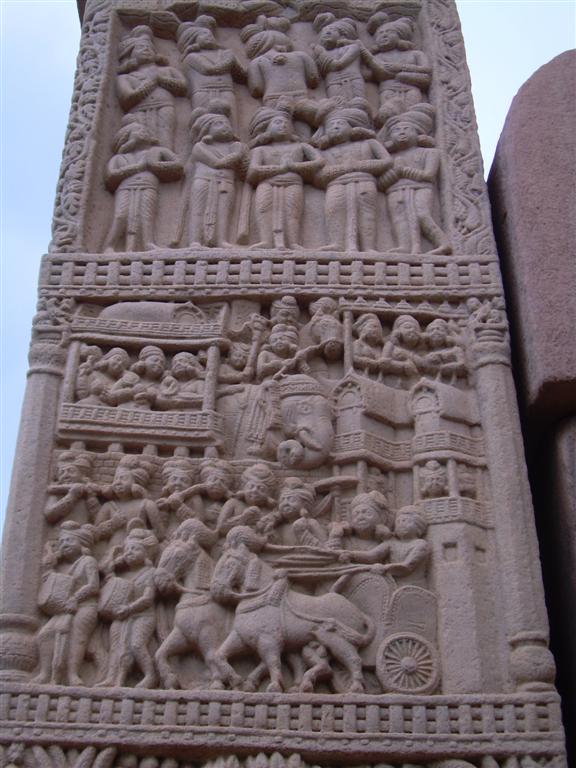
























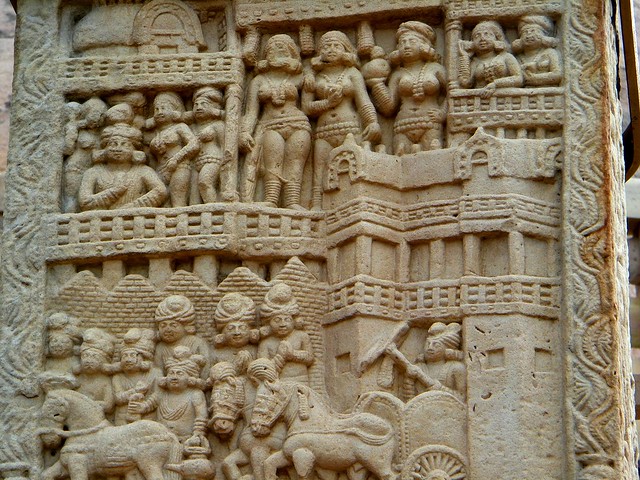










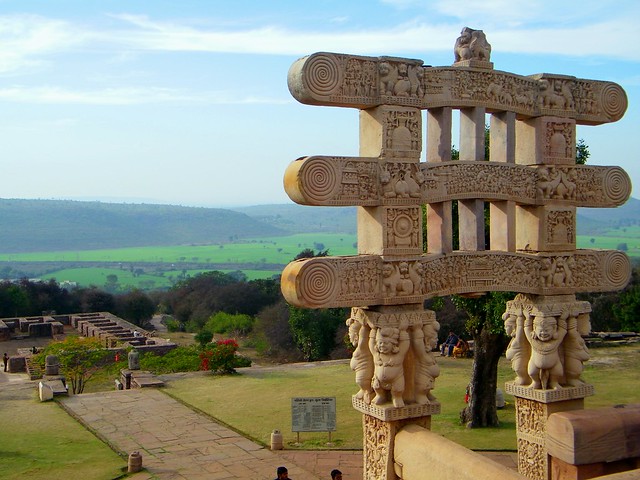
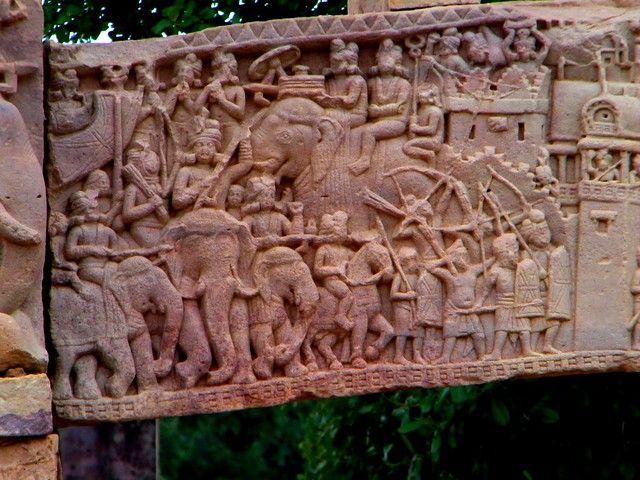
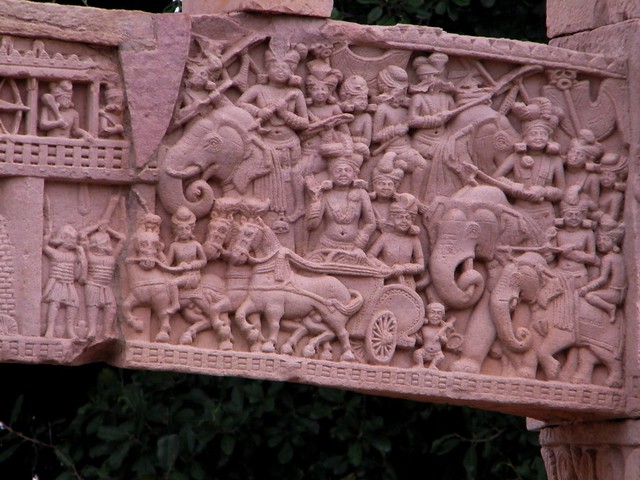
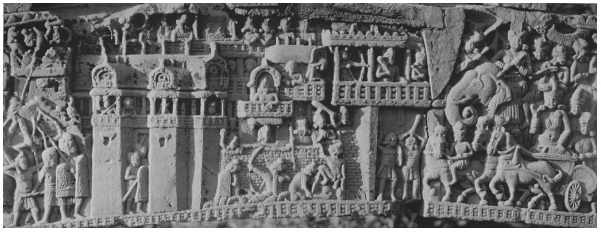
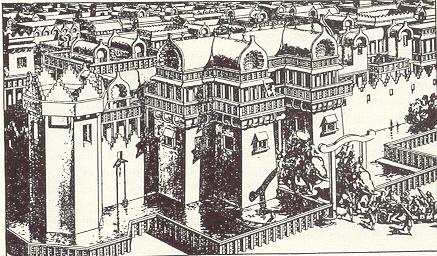
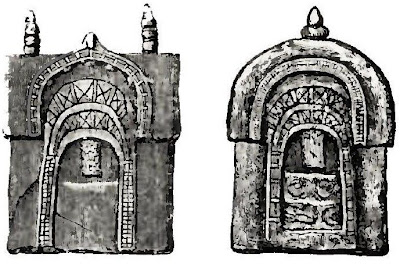














 Ishkaran S. Bhandari
Ishkaran S. Bhandari 


.jpg)

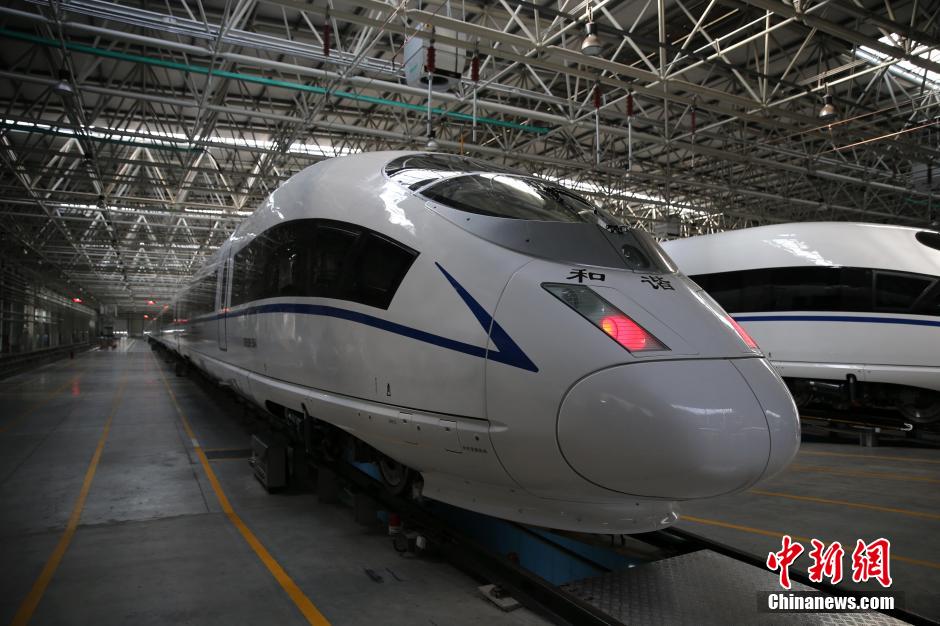

 FAA Proposes Rules To Open The Sky To Some Commercial Drones, But Delivery Drones Remain Grounded
FAA Proposes Rules To Open The Sky To Some Commercial Drones, But Delivery Drones Remain Grounded
 The FAA is also considering to create a separate category for very small drones under 4.4 pounds that may allow operators to fly over people.
The FAA is also considering to create a separate category for very small drones under 4.4 pounds that may allow operators to fly over people. As the FAA however also noted in today’s press conference, this is only a first step. The administration continues to evaluate technologies that will allow drones to go beyond line of sight and will continue to allow for exemptions. For now, though, delivery drones remain grounded.
As the FAA however also noted in today’s press conference, this is only a first step. The administration continues to evaluate technologies that will allow drones to go beyond line of sight and will continue to allow for exemptions. For now, though, delivery drones remain grounded.





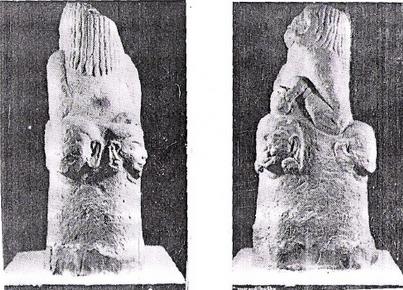






















Reply
Reply
Reply
Reply
Reply
Reply
Reply
Reply
Reply
Reply
Reply